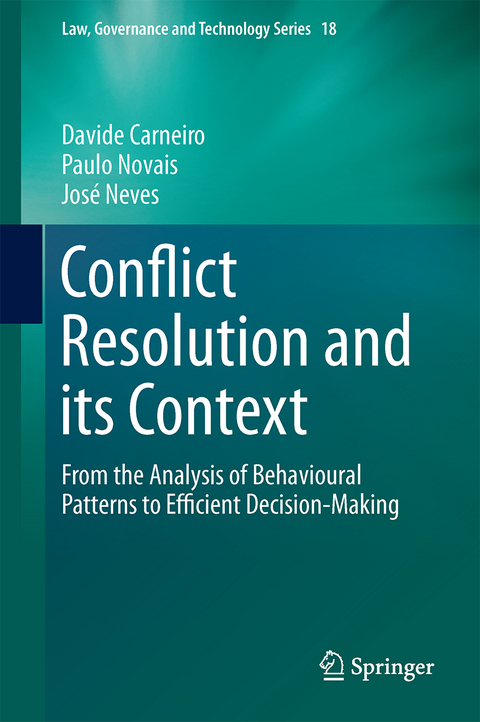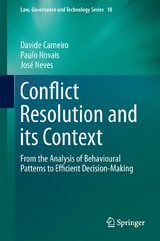Conflict Resolution and its Context
From the Analysis of Behavioural Patterns to Efficient Decision-Making
Seiten
2014
|
2014
Springer International Publishing (Verlag)
978-3-319-06238-9 (ISBN)
Springer International Publishing (Verlag)
978-3-319-06238-9 (ISBN)
This book studies how technological solutions can be used to alleviate the current state of legal systems, with their clogged up courtrooms and inefficient conflict resolution methods. It reviews the shortcomings and disadvantages of traditional and alternative conflict resolution methods and turns to Artificial Intelligence for problem-solving techniques and solutions. The book is divided into four parts. The first part presents a general and systematic analysis of the current state of the legal systems, identifying the main problems and their causes. It then moves on to present UM Court: a framework for testing and prototyping conflict resolution services. This framework was developed with the objective of using Artificial Intelligence techniques to build a service environment for conflict resolution. The third part of the book takes a step into the future by analyzing the use of Intelligent Environments in the support of conflict management and resolution. It describes the approach taken and the experiments performed in the Intelligent Systems Lab of the University of Minho. The final part of the book contains the conclusions and shows the potential advantages of the use of Intelligent Environments as a way to implement better conflict resolution procedures (virtual or real), in which all the participants have access to more and better information and are able to take better informed decisions.
Dedication.- Foreword.- Preface.- Part I.- 1 Introduction.- 2 Traditional and Alternative ways to Solve Conflicts.- 3 Advantages and Disadvantages of Avoiding the Courtroom.- 4 Artificial Intelligence in Online Dispute Resolution.- 5 Context and its Importance.- Part II.- 6 An Agent-based Architecture for a Second Generation ODR Tool.- 7 Information Retrieval.- 8 The Conflict Resolution Process.- Part III.- 9 A Framework for Developing Sensible Environments.- 10 Inferring Conflict Resolution Styles.- 11 Stress in Conflict Resolution.- Part IV.- 12 Analysis of Practical Results.- 13 Concluding Remarks and Future Thoughts.
| Erscheint lt. Verlag | 25.6.2014 |
|---|---|
| Reihe/Serie | Law, Governance and Technology Series |
| Zusatzinfo | XXVIII, 279 p. 71 illus., 46 illus. in color. |
| Verlagsort | Cham |
| Sprache | englisch |
| Maße | 155 x 235 mm |
| Gewicht | 608 g |
| Themenwelt | Informatik ► Grafik / Design ► Digitale Bildverarbeitung |
| Informatik ► Theorie / Studium ► Künstliche Intelligenz / Robotik | |
| Recht / Steuern ► Allgemeines / Lexika | |
| Schlagworte | Alternative Conflict Resolution • Artificial Intelligence and Law • Artificial Intelligence and Online Dispute Resolut • Artificial Intelligence and Online Dispute Resolution • Artificial Intelligence and the Law • Assisting Negotiation • Behavioral analysis • Behavioral Analysis and Conflict Resolution • Conflict Handling Style • Conflict Resolution • Context-Aware Conflict Resolution • Fatigue and Conflict Resolution • Information Retrieval • Information Systems and Applications • Litigation in Court • Power of Context • Prevailing Conflict Resolution Platform • Stress and Conflict Resolution • Supporting Conflict Resolution |
| ISBN-10 | 3-319-06238-7 / 3319062387 |
| ISBN-13 | 978-3-319-06238-9 / 9783319062389 |
| Zustand | Neuware |
| Haben Sie eine Frage zum Produkt? |
Mehr entdecken
aus dem Bereich
aus dem Bereich
Modelle für 3D-Druck und CNC entwerfen
Buch | Softcover (2022)
dpunkt (Verlag)
34,90 €
alles zum Drucken, Scannen, Modellieren
Buch | Softcover (2024)
Markt + Technik Verlag
24,95 €




